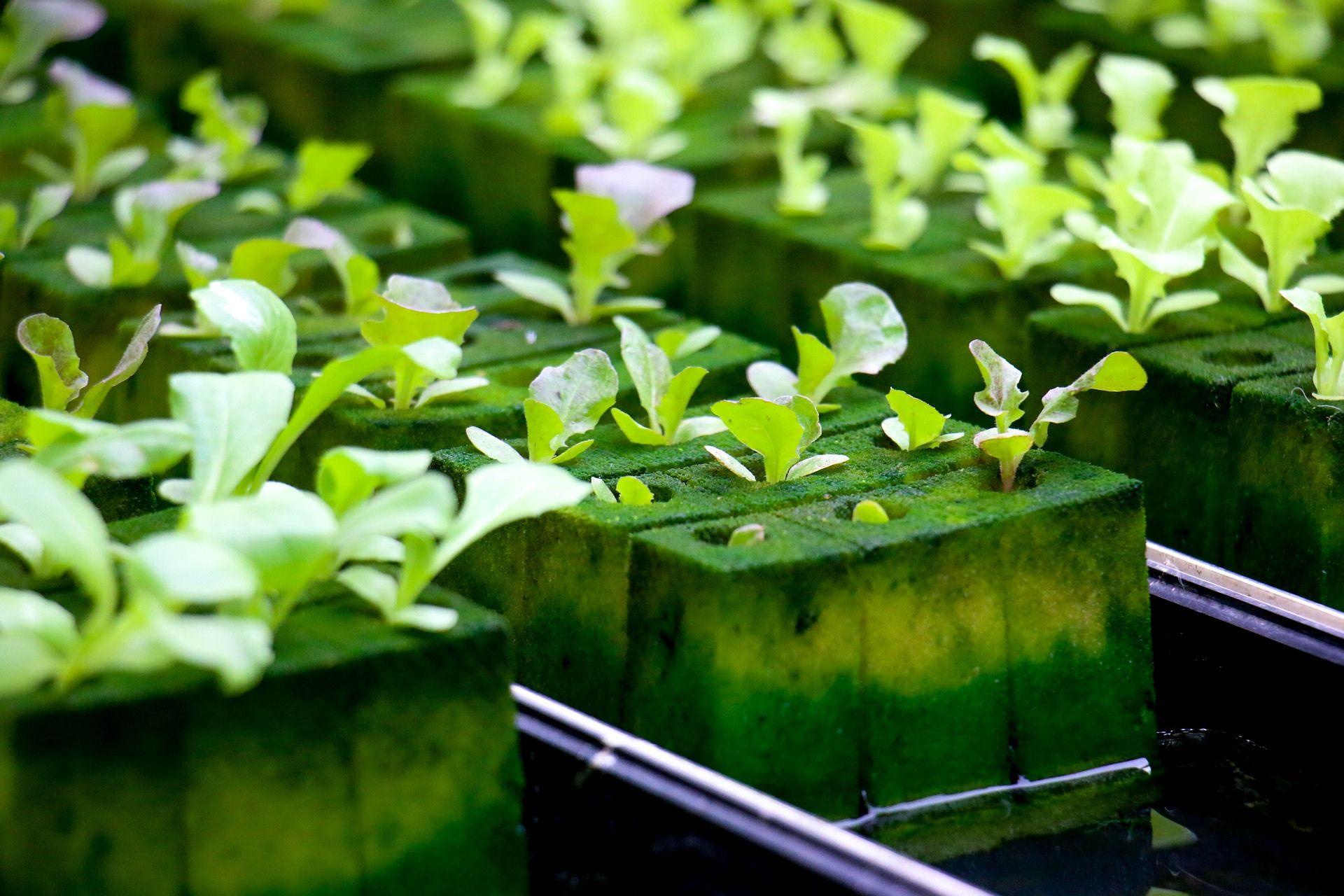
Information for professional hydroponic farming
Professional hydroponics is a soilless cultivation technique, where soil is replaced by water.
The reasons why farmers choose the hydroponic method are:
- profit (rapid growth of crops and exploitation of vertical spaces for cultivation)
- infertile soils (the soil is increasingly sick and saturated with substances it cannot dispose of)
- the possibility of growing anywhere (hydroponic systems can be placed in any environment)
- the rehabilitation of abandoned buildings (building redevelopment projects)
- cultivation 365 days a year (continuous production cycles)
- the reduction of diseases (since there is no soil, soil-borne diseases are avoided)
Let us add a consideration in the light of climate change. Increasingly intense and frequent extreme weather events make outdoor cultivation more and more difficult. Therefore, it is important (and in the future will be vital) to allocate a part of the production to this indoor technique, thus ensuring the availability of food for the population.
Advantages of Hydroponics
One of the advantages of professional hydroponic cultivation is the small amount of space the plant needs to grow. This results in a larger number of plants grown and thus, more income. A second advantage concerns the non-use of herbicides and the reduction of pesticides. This does not mean that hydroponic cultivation is natural, because unfortunately plant protection products are still used.
The third advantage of hydroponics is the reduction of water volumes, both in open and closed (recirculating) systems. This is another reason why in many countries a lot has been invested in hydroponic systems to cope with the difficulty of water supply.
The fourth positive side of hydroponic cultivation concerns the lower occurrence of diseases and pests as the environments are generally sanitised. Since there is no contact with the soil, it is easier to control diseases, but this does not prevent the spread of fungal diseases typical of hydroponic cultivation, such as Fusarium and Pythium.
Last, but not least, is the control of the nutrients needed by hydroponic systems. This will be discussed later in the article.
Disadvantages of Hydroponics
Regarding the disadvantages of professional hydroponic cultivation, we can find the transmission of diseases through water. In the hydroponic cultivation method, the high humidity in the environment and the water circulation system can lead to the immediate spread of fungal diseases and infections that can even cause the death of the entire crop.
A second downside is the vulnerability to power failures. Since the hydroponic system requires a highly controlled environment but is completely dependent on the power supply, it takes little to damage the crops (lack of light, falling temperatures).
Another disadvantage specifically concerns the root system, which is particularly exposed to various problems in the absence of soil, such as the inoculation of pathogens and the vulnerability of the type of cultivation that would lead to major production losses. In this sense, the choice of substrate and support is decisive for the cleanliness of the germination or cultivation area, as are the tools that are used.

Hydroponic farming: sustainability or appearance?
Although most information on the internet reports that hydroponic farming is sustainable, it is only fair to shed some light on this. The sustainability that everyone talks about refers to saving water, which is undoubtedly a good thing, even though the water used in hydroponic cultivation is constantly disinfected.
As far as the nutrient solution is concerned, it is only fair to delve into its reality. In fact, predominantly chemical nutrients are used to promote rapid and forced plant growth, without respecting the natural growth times of plants.
It is said that no pesticides are used in hydroponic cultivation, but this is not the reality as there are a variety of pesticides on the market specifically for hydroponics.
Certainly no weedkillers are used, but the chemicals mentioned above lead us to reflect on the nutritional capacity of agricultural products grown in this way and the health of consumers. To date, there is still a lot of misinformation, but know that it is perfectly possible to achieve truly sustainable hydroponic production. How? We explain this in the next chapter.
Fertilisation in hydroponics
Most problems in hydroponic growing systems are caused by the incorrect use of fertilisers. In professional hydroponic cultivation, the use of BIOAKSXTER® M31 Hydroponics:
- provides energy for plant development
- strengthens the root system
- counteracts climatic and nutritional stresses
- removes chemical residues and contaminants
- regulates pH and salinity
- improves photosynthetic efficiency by favouring nutrient uptake
- optimises the sanitary status of water and regulates its pH
- increases the plant's natural defence against fungal, bacterial and viral diseases
In essence, the use of the depolluting fertiliser BIOAKSXTER® M31 Hydroponics:
- allows the plants to develop to their full potential, the full expression of their organoleptic characteristics, the high shelf life of the products;
- is designed for the best nutrition, that is suitable for building the organic molecules necessary for life in the human organism;
- eliminates any chemical residues and pollutants in the environment, especially in the circulating nutrient solution, and consequently in the product we eat.